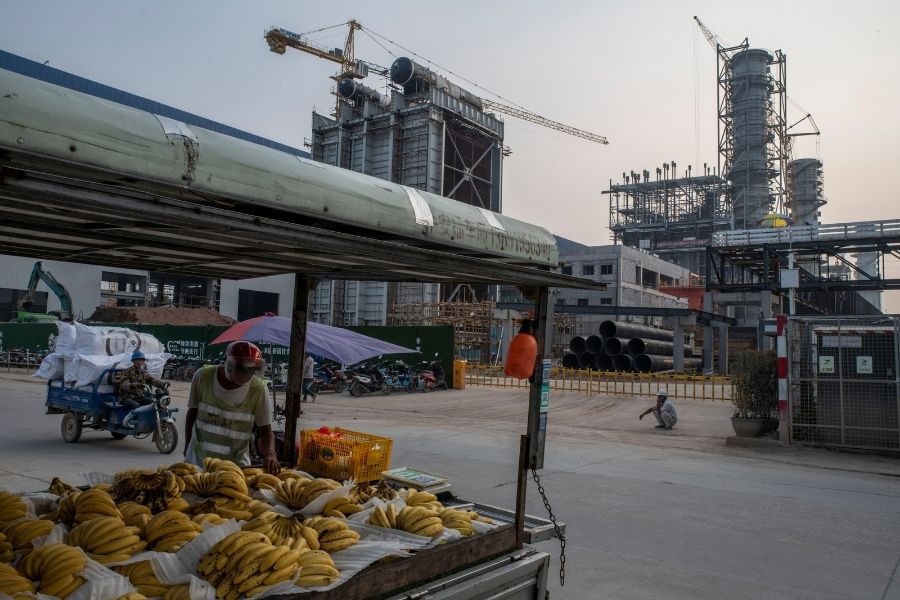
China's power problems expose a strategic weakness
China's electricity shortage is rippling across factories and industries, testing the nation's status as the world's capital for reliable manufacturing
 A gas-fired power plant, background, under construction in Dongguan, China on Sept. 28, 2021. China has been rapidly expanding its use of natural gas as well as solar panels, wind turbines and hydroelectric dams. Yet China still does not have enough energy to meet demand.
A gas-fired power plant, background, under construction in Dongguan, China on Sept. 28, 2021. China has been rapidly expanding its use of natural gas as well as solar panels, wind turbines and hydroelectric dams. Yet China still does not have enough energy to meet demand.
Image: Gilles Sabrié/The New York Times
BEIJING — A bread company cannot get all the power it needs for its bakeries. A chemicals supplier for some of the world’s biggest paint producers announced production cuts. A port city changed electricity-rationing rules for manufacturers four times in a single day.
China’s electricity shortage is rippling across factories and industries, testing the nation’s status as the world’s capital for reliable manufacturing. The shortage prompted authorities to announce Wednesday a national rush to mine and burn more coal, despite previous pledges to curb emissions that cause climate change.
Mines that were closed without authorization have been ordered to reopen. Coal mines and coal-fired power plants that were shut for repairs are also to be reopened. Tax incentives are being drafted for coal-fired power plants. Regulators have ordered Chinese banks to provide plenty of loans to the coal sector. Local governments have been warned to be more cautious about limits on energy use that had been imposed partly in response to climate change concerns.
“We will make every effort to increase coal production and supply,” Zhao Chenxin, secretary-general of the National Development and Reform Commission, China’s top economic planning agency, said at a news briefing Wednesday in Beijing.
Depending on how much coal can be mined and burned soon, China’s electricity shortage could call into question whether Beijing can deliver in the coming months the strong economic growth that China’s people have come to expect.
©2019 New York Times News Service




